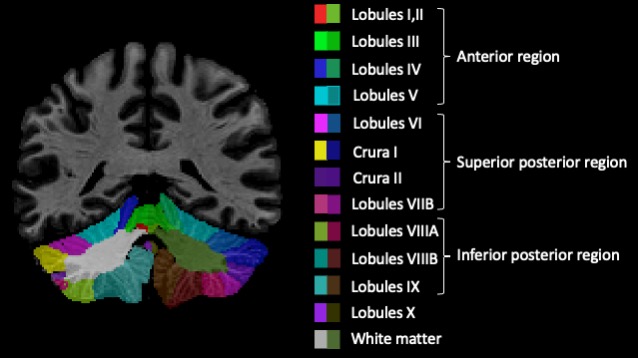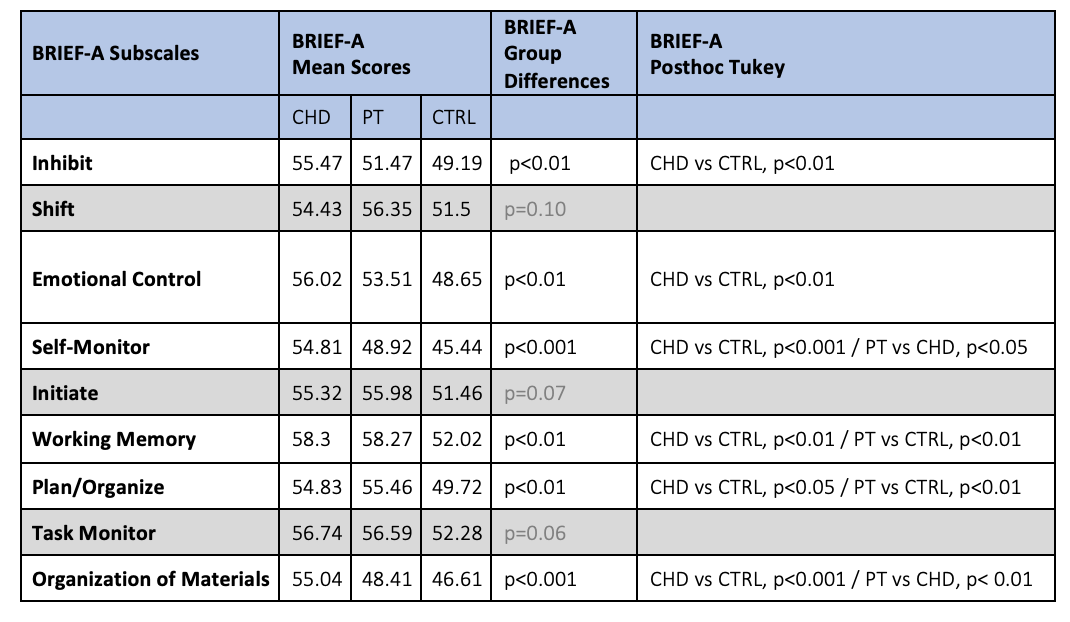Neonatal Follow-up
NICU Follow Up and Neurodevelopment 6: The NICU Stay and Outcomes
46 - Cerebellar volumes are associated with executive functioning in youth born preterm or with a congenital heart disease.
Monday, May 1, 2023
9:30 AM - 11:30 AM ET
Poster Number: 46
Publication Number: 46.446
Publication Number: 46.446
Sarah Palmis, McGill University Faculty of Medicine and Health Sciences, Montreal, PQ, Canada; Kaitlyn Easson, McGill University, Montreal, PQ, Canada; Gabriel A. Devenyi, Douglas CIC, Verdun, PQ, Canada; May Khairy, McGill University Faculty of Medicine and Health Sciences, Montreal, PQ, Canada; Charles V. Rohlicek, McGill University Faculty of Medicine and Health Sciences, Montreal, PQ, Canada; Guillaume Gilbert, Philips Healthcare, Montreal, PQ, Canada; Christine Saint-Martin, McGill University Faculty of Medicine and Health Sciences, montreal, PQ, Canada; Marie Brossard-Racine, McGill University Faculty of Medicine and Health Sciences, Montreal, PQ, Canada

Sarah Palmis, PhD (she/her/hers)
Postdoctoral Fellow
McGill University Faculty of Medicine and Health Sciences
Montreal, Quebec, Canada
Presenting Author(s)
Background: Survivors of prematurity (PT) or of a complex congenital heart defect (CHD) often experience executive function (EF) deficits. However, it remains difficult to anticipate an individual's risk for EF deficits due to the lack of established neurobiomarkers. Cerebellar development has been shown to be particularly vulnerable in both PT and CHD survivors.
Objective: Considering the known role of the cerebellum in higher-order cognitive processes and emotional regulation, this study aims to explore the relationships between regional cerebellar volumes and EF deficits in these two at-risk groups and as compared to healthy peers.
Design/Methods: A total of 152 youth (aged 16-27 years), 49 born PT (≤ 33 weeks of gestation), 47 born with CHD who underwent open-heart surgery during infancy, and 54 healthy term-born controls, were enrolled. Each participant underwent a brain MRI and completed the Behavior Rating Inventory of Executive Function – Adult (BRIEF-A), a standardized self-reported measure of EF. Using the Multiple Automated Generated Template Brain Segmentation Algorithm, a validated automatic segmentation pipeline, we segmented the cerebellum into bilateral regions (anterior, superior and inferior posterior) and subsequently into 26 lobules (Fig. 1). Linear models were used to compare BRIEF-A scores between the three groups and then to test the associations between cerebellar volumes and BRIEF-A scores on subscales that were significantly different from the controls. adjusting for total brain volume and socioeconomic status.
Results: EF group differences are presented in Table 1. At the regional level, only poorer emotional control was associated with smaller volumes in the left anterior region in youth with CHD and with the left inferior posterior region in the controls. At the lobular level, poorer emotional control was associated with smaller volumes of the left lobule V in CHD participants, and of the left lobule VIIIB and right Crus I in controls. Poorer plan/organize skills were associated with smaller right lobule X volumes in both youth born PT and controls. In the CHD group only, poorer inhibitory control was associated with smaller left lobule V volumes.
Conclusion(s): Our results suggest that smaller regional and lobular cerebellar volumes are associated with poorer EF skills. Although CHD and PT participants showed some similarities in their EF deficits, the cerebellar correlates differed. Future work should investigate if cerebellar volumes assessed during infancy are associated with later-appearing EF deficits and could serve as potential neurobiomarkers to anticipate deficits.


